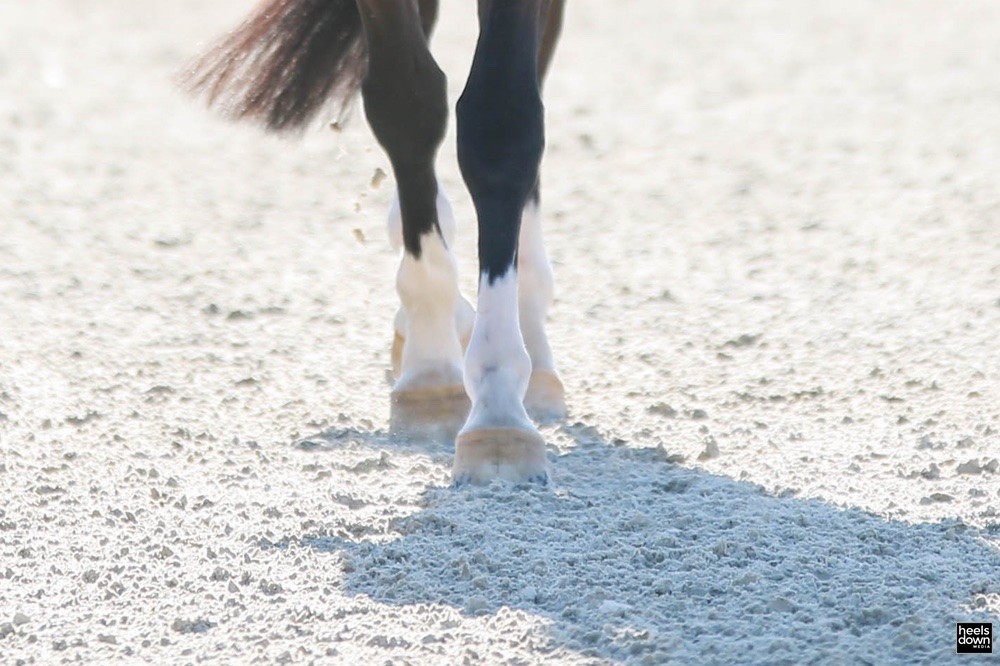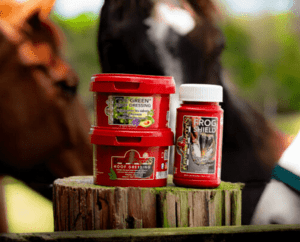Pro Tips: How to Treat and Prevent Fungus, Presented by Wahl

Fungus. We may be heading out of the hottest part of the year, when sweat can increase the likelihood of an outbreak, but your horses in work or who are exposed to moisture are still at risk. We’ve gathered some of the best practices for preventing fungus and treating it if it does crop up.
Prevention
Moisture is a big culprit that invites fungus. Horses who sweat a lot or who wear boots or wraps during work can be susceptible to fungus outbreaks if they are not properly cared for — and in some cases, horses with particularly sensitive skin can be more prone regardless of how well you groom them.
Make sure you are keeping your horse as clean as possible. If it’s warm enough, hose off your horse’s legs and saddle areas (at the least) after removing tack to wash away any sweat. Simply allowing the sweat to dry on its own is not sufficient as the bacteria can irritate the skin. In colder weather, you can use warm water and a sponge to target sweaty areas.
Some riders will use rubbing alcohol to spray on wet areas (after the area is clean) to aid with drying and preventing bacteria. Be careful not to use this tip if your horse is prone to dry skin, however.
You can also use a towel to hand dry areas that got sweaty. This can be useful for legs as well as faces. All too often, you’ll see a horse get hosed off and left to air dry, but the head does not get sweat scraped or dried off so a lot of water is left sitting. Using a towel will help ensure proper drying and airing out of the hair and skin.
Make sure that your horses are not sharing dirty gear. This applies to saddle pads, boots, and polo wraps in particular. Be sure you’re washing your pads and wraps and letting them dry completely before using them again. Imagine using the same clothes you wore to the gym the next day — gross!
Treatment
If your horse does come down with a nasty case of fungus, there are many methods to treat. Horses will respond differently to these treatments, so at times it’s a matter of trial and error to find what works best for you.
Several companies produce fungus fighting ointments, such as That Blue Stuff, that work by targeting the fungus and allowing the skin to properly dry after getting wet.
Anti-fungal antiseptics are also useful to have on hand in the event of fungus. A good Betadine scrub can help clean the affected area and remove harmful bacteria.
The jury is out on whether or not you should pick off the scabs that are caused by fungus. Some will argue that it’s better to remove to scab to allow the skin to breathe, others will say that this does more harm than good.
“Some horses’ legs will blow up if I pick at the fungus, so you just have to be really careful,” pro groom Courtney Carson said. “If they aren’t super sensitive, I will use warm water and wet their legs, then scrub in a micro-bacterial shampoo and scrape gently with my fingernails until most of the scabs are gone. Towel dry and let them stand for a few minutes before putting them away. If you have a horse that is super sensitive, you can slather Vaseline onto the scabs and wrap overnight, which will cause the scabs to just fall off.”
Courtney also swears by E3 Wound Cream, Seashore Ointment, or plain Desitin (which can be found at the drugstore for diaper rash) for fungus treatment, all of which she says work well on different skin types.


